Tips for riding with new cyclists
Getting someone to start riding a bike is not easy. Getting them to enjoy and become enthusiastic about the sport is even less so. Cycling is a tough sport that can be tremendously hostile to the beginner during the first steps. Making the first pedal strokes of a new rider a great experience is essential to make that person fall in love with cycling.
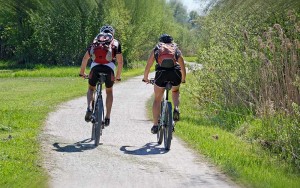
How to guide someone in their first pedaling
Initiating a friend or partner in cycling is not an easy thing to do. It is a hard sport, with an important agonizing component. In addition, there is also the technical element, not the one that dictates the driving of the bike itself but the one that refers to the position on the bike, the pedaling and the proper use of the gears.
All this, together with the need to have a minimum of equipment: bike, helmet, etc. makes it difficult to encourage anyone who has not had any contact with cycling to try it. On the positive side, it is a less aggressive sport than the other king of popular sports, running, and it is highly gratifying as soon as a certain habit is acquired and the initiation phase is overcome.
RECOMENDADO

How to lose body fat? Differences between losing weight and losing fat

When must the tubeless tire sealant be replaced? What quantity?
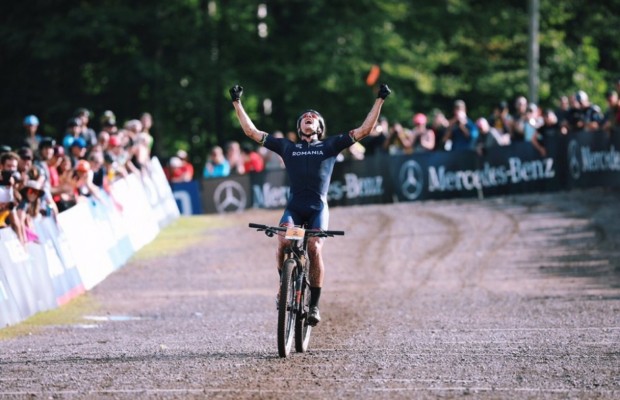
The real importance of signing up for a race
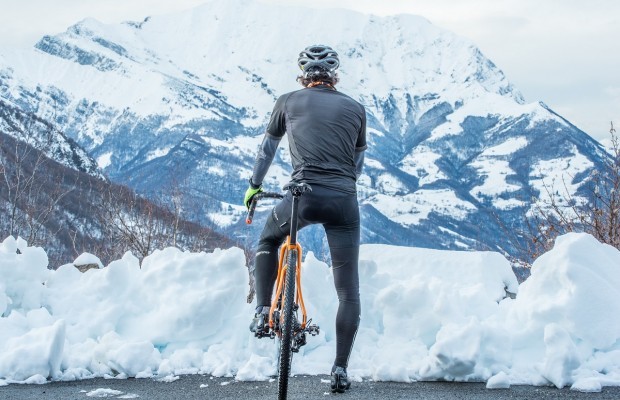
Don't overlook your nutrition when training in cold weather

The best apps for cycling and mountain biking

25 cycling gifts ideas to get it right
Being a good mentor and getting a newcomer to cycling to find a passion for the sport is not easy and requires us to have a good dose of mettle. Here are some tips to be the best possible teacher.
Take it easy
You have to assume that the day you go out with someone who is just starting out in cycling the pace is not going to be like your training. If you follow a scheduled training program these are ideal days to put in an active recovery day. Assume that you are going to have to stop many times and that everything is going to be very slow.
Patience is essential since, used to other rhythms, it can be boring for the guide. Try to find motivation in enjoying the environment and observing how the new cyclist is assimilating everything the guide is telling them.
Choose the right route
Put yourself in the new rider's shoes and think that his or her abilities will be far from yours. What may seem like an easy ride to you may be a challenge for that person. Try to design circular routes that are not too far from the starting point and where there is the possibility of adapting the distance, shortening it if necessary.

It is also important to control the accumulated elevation gain, where we will try to look for more or less flat routes but without avoiding the occasional easy climb that will introduce this part of cycling to the novice in question, trying to avoid the hard slopes that can be frustrating for someone not used to cycling.
When it comes to choosing the modality, the road, although simpler, adds an extra stress to those not used to dealing with traffic and total beginners who do not yet have a minimum mastery of the bike. Going out on simple roads and tracks will then be a little more pleasant for beginners, although, in this case, we must take into account the technical component, avoiding trails and downhills that can be complicated. What may seem trivial to us may be unapproachable for those who are just starting out.
The pace is set by the beginner
The feeling that we are pedaling super easy does not mean that the other person has the same perception. What may seem to us like riding at a standstill may be a significant effort for someone who is not used to endurance sports. Do not try to force the pace at any time because otherwise it is likely that the new rider will end up paying for it and will not remember the day with special pleasure.

Although we should let them set the pace at which they feel most comfortable, in our experience we often have to do something, not to encourage them, but to get them to lift their feet. It is common among beginners to face the climbs with too much intensity or the beginning of the route, where you are fresh, with more joy than recommended, which then can be paid in the final part of the route. It is part of our role as a guide to teach you how to manage your pace and sensations.
Do not overwhelm with too much advice
When we accompany someone who is starting out, it is normal to see details that are not done correctly and try to correct them. In principle there are many, however if we begin to saturate this person with constant advice, it is possible that in the end he/she will not retain any of them, or even feel so overwhelmed that he/she will become frustrated.
It's better to give small hints, not while riding, preferring the moments when we stop and when he/she is less tense and more receptive to what we can explain to him/her.
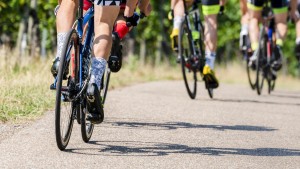
In order of importance about common mistakes of those who start cycling we could mention first the position on the bike. It is essential to avoid injuries and make an effective pedaling, even if it is only to bring the saddle to the right height. Then there are aspects related to how to ride on the road in the case of riding on asphalt or notions about choosing the easiest route for roads. It is also important to emphasize the correct use of the bike's gears and the need to pedal with joy. Beyond that, the rest of the aspects are more secondary and can be explained in small doses.
Motivation and positive attitude
Although the beginner cyclist will probably do many things wrong, choosing to point out a moment of maximum effort in the middle of a climb may not be the most appropriate thing to do. Certain explanations and advice can wait until the end of the route or at a stop.
During the pedaling it is preferable to try to motivate those who go with us, explaining the route, telling them things about the places we are going through so that they are distracted from the effort and generally trying to make the ride as pleasant as possible.
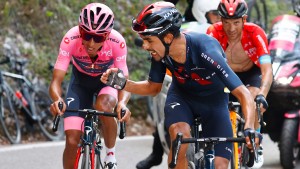
When the bad moments come, those in which they will already go with the forces to the limit or face a climb of special difficult, we will have to be there to support, making see what has already overcome. Explaining the rest of the way and making them see that this moment of great effort or physical fatigue is only something transitory and that learning to deal with it is part of this sport. Having a large dose of tact is vital when these situations arise to prevent the beginner cyclist from hating the bike at the first moment.
When it comes to motivation, the days before the ride are also important. Involving this new cyclist in the planning of the route and creating expectation will make this person look forward to the day of going out on the bike and doing what he/she has been preparing for several days as something special.
Progressing little by little
Being paternalistic and thinking that the beginner cyclist can not cope with certain routes or certain difficulties can lead to an impasse that makes this person who is starting out on the bike lose motivation. If there is something good about cycling is that in the beginning it is very easy to progress quickly and we must adapt the routes and rhythms to this progression.
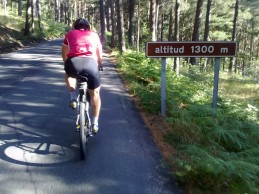
Setting new challenges and letting the new cyclist face situations that at some point may overcome him/her is an indispensable part of learning. We have all made mistakes that help us to learn and increase our self-knowledge of our capabilities.
Do not overlook technique
Technical aspects are the main weakness of even theoretically experienced cyclists. Getting them right from the start is vital for maximum cycling enjoyment and, above all, in the safest way.
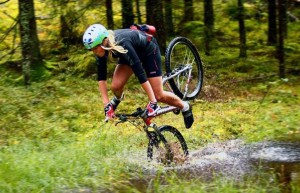
On the road, the main aspects to take into account are those related to how to ride behind another cyclist, knowing how to read where the wind blows. Also to be able to ride correctly and coexist with other vehicles on the road. Last but not least is the issue of how to face downhills, an important source of fear for many and that with proper learning can be mastered. We will explain to our pupil the proper technique for descending, the theory of how to draw the curves or how to brake correctly and we will be their guide in the downhills that we will find.
On trails, the technical aspect becomes even more important when it comes to determining the grip of the different surfaces we encounter. Choosing the easiest route by learning to anticipate what we are going to find or how to use the body to absorb the irregularities of the terrain. Also uphill, when it comes to playing with the weights to achieve maximum traction capacity. Designing outings that offer the possibility of working on technique will give the new cyclist a solid foundation on which to build his or her progression in this sport.
Special attention to the mechanics
Believe it or not, there are many cyclists, more or less experienced, who are unaware of something as simple as repairing a flat tyre correctly or making small adjustments to the gears. We don't mean that you have to have the knowledge of a mechanic, but being aware that keeping your bike in good condition is an indispensable element when it comes to enjoying pedaling to the fullest.

Cleaning and basic adjustments are something we should teach the new cyclist. How to wash the bike, the correct way to oil the chain and the need to do it regularly or how to correct a malfunction of the derailleur by acting on the tensioners. Also how to repair the breakdowns that we can suffer on the road as the typical flat tyre, a broken chain or a broken spoke of the wheel.
Also in the mechanical aspect would enter the importance of the tyre pressures and suspensions in the case of mountain bikes, explaining its impact on the handling of the bike and encouraging to try different settings to the new rider to check the effect that is achieved with the changes.